What is an AI Robot and How Does It Work?
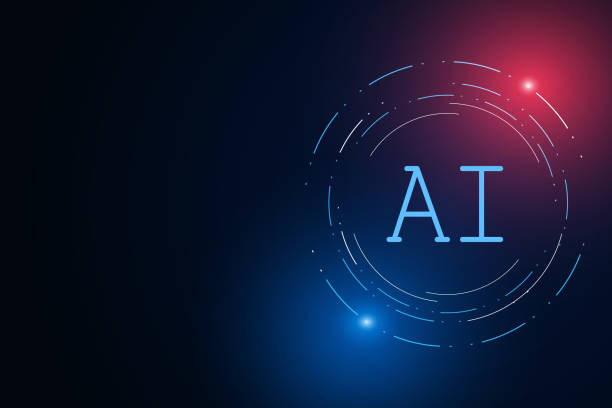
#AI Robot is a combination of two distinct fields: #Robotics and #Artificial Intelligence (AI).
Robotics deals with the construction of physical, programmable machines capable of performing various tasks.
Artificial intelligence, on the other hand, focuses on developing computer systems that can perform tasks that typically require human intelligence, such as learning, reasoning, problem-solving, and understanding natural language.
Artificial intelligence enables #robots to operate autonomously, interact with their environment, and make intelligent decisions.
These robots can be used in various industries, including manufacturing, healthcare, customer service, and space exploration.
Essentially, an AI robot is a system that uses artificial intelligence algorithms to control and guide the movements and actions of a physical robot.
These algorithms allow the robot to collect information from its sensors, understand its environment, make informed decisions, and effectively perform its tasks.
AI robots can be broadly divided into three categories: industrial robots, service robots, and research robots.
Industrial robots are used in factories to perform repetitive and dangerous tasks such as welding, painting, and assembly.
Service robots are used in various sectors such as healthcare, customer service, and security.
Research robots are used to develop and test new robotic and artificial intelligence technologies.
Are visitors leaving your e-commerce site before making a purchase? Don’t worry anymore! With RasaWeb’s professional e-commerce website design services, solve the problem of not converting visitors into customers forever!
✅ Significantly increase conversion rates and sales
✅ Provide an unparalleled and engaging user experience
⚡ Contact us now for a free consultation!
Diverse Applications of Smart Robots
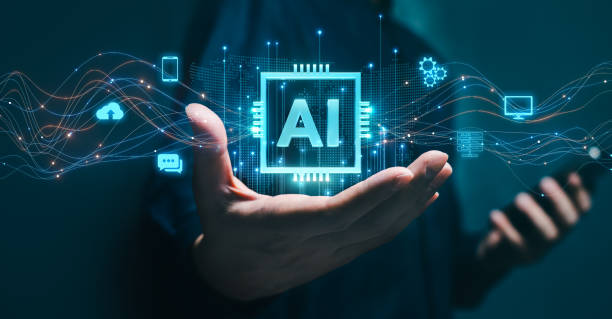
The applications of smart robots are very broad and diverse, and they can be used in almost every field.
In industry, smart robots can be used to automate processes, increase productivity, reduce costs, and improve product quality.
In medicine, surgical robots help doctors perform complex surgeries with greater precision and delicacy.
Nurse robots can assist in patient care, and pharmacist robots can deliver medications with greater accuracy and speed.
Artificial Intelligence
In agriculture, smart robots can be used for planting, harvesting, and caring for crops.
In space exploration, rover robots can help collect information from other planets and moons.
In daily life, home robots can help clean the house, cook, and care for children and the elderly.
Also, chatbot robots can act as virtual assistants to help customers with questions and provide services.
In summary, AI robots have the potential to improve our lives in many ways and help solve complex problems.
Advantages and Disadvantages of Using AI Robots
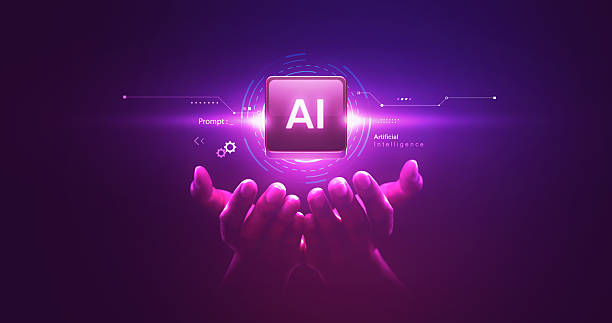
The use of artificial intelligence robots has many advantages.
These robots can perform repetitive and dangerous tasks with greater accuracy and speed than humans.
AI robots can also help improve the quality of products and services, reduce costs, and increase productivity.
In addition, smart robots can be used in conditions that are dangerous for humans, such as environments contaminated with chemicals or radioactive materials.
However, the use of AI robots also has disadvantages.
One of the most important disadvantages is the loss of job opportunities.
With the automation of processes by robots, many traditional jobs will be eliminated.
Also, there are concerns about data security and privacy.
If AI robots have access to individuals’ personal information, this information may be misused.
Furthermore, there are concerns about the accountability of robots.
If an AI robot makes a mistake, who will be responsible? Finally, some people are concerned that AI robots will in the future get out of human control and become a threat to humanity.
AI robots
| Advantages | Disadvantages |
|---|---|
| Increased productivity | Job displacement |
| Reduced costs | Security concerns |
| Improved quality | Accountability issues |
Different Types of AI Robots by Application
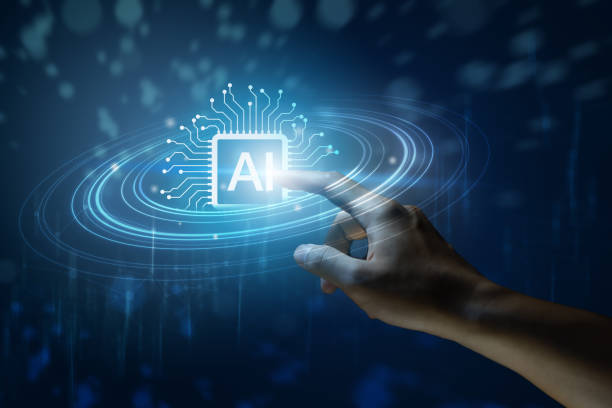
AI robots are divided into different types based on their application.
Industrial robots are used to perform repetitive and heavy tasks in factories.
These robots are usually robotic arms that can work with high precision and speed.
AI robots
Service robots are used to provide services to humans in various environments such as hospitals, hotels, and restaurants.
These robots can help with cleaning, food delivery, patient care, and providing information to customers.
Medical robots are used to assist doctors in surgeries and disease diagnosis.
These robots can operate with greater precision and delicacy than humans and help improve surgical outcomes.
Military robots are used to perform dangerous and difficult tasks on the battlefield.
These robots can help identify and neutralize mines, collect information, and transport equipment.
Space robots are used for exploration and research in space.
These robots can help collect soil and rock samples, perform scientific experiments, and send images back to Earth.
Are you tired of your company website not meeting your expectations and losing online opportunities? With professional corporate website design by RasaWeb,
✅ Double your business credibility
✅ Attract new customers and sales leads
⚡ Get a free consultation for your corporate website!
What Will Be the Future of AI Robots?

The future of AI robots looks very bright and exciting.
With advances in AI and robotics technologies, robots will become smarter, more capable, and more versatile.
They can be used in a wider range of industries and jobs and improve our lives in many ways.
AI robots
In the future, we will see robots that can interact naturally with humans, understand emotions, and respond to our needs.
Surgical robots can perform more complex surgeries with greater precision and delicacy, and home robots can help care for the elderly and children.
Autonomous robots can make transportation safer and more efficient, and teacher robots can help students learn better.
However, we must also pay attention to the potential challenges and risks arising from the development of AI robots and plan to manage and control these technologies.
Impact of AI Robots on the Job Market

The impact of AI robots on the job market is a complex and controversial issue.
On the one hand, robots can eliminate many traditional jobs by automating processes.
AI robots On the other hand, robots can create new jobs and help increase productivity and economic growth.
Studies show that automation can lead to the loss of millions of jobs worldwide.
Jobs involving repetitive and routine tasks are most at risk.
However, automation can also create new jobs in areas such as robot development and maintenance, data analysis, and artificial intelligence.
In addition, robots can help humans perform their tasks and increase their productivity.
For example, a doctor can use a surgical robot to perform complex surgeries with greater precision.
A lawyer can use a legal robot to research cases and provide legal advice.
To mitigate the negative effects of automation on the job market, governments and companies must take steps to train and educate the workforce for new jobs.
We must also consider establishing social safety nets for people who lose their jobs.
AI robots
Ethical Challenges of Using AI Robots
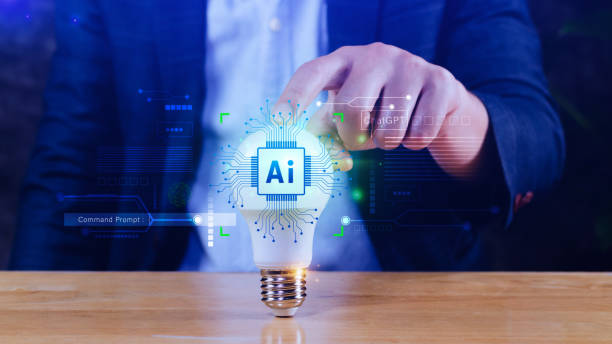
The use of AI robots raises several ethical challenges.
One of the most important challenges is the issue of accountability.
If an AI robot makes a mistake, who will be responsible? The robot’s manufacturer, programmer, user, or the robot itself? AI robots
Another ethical challenge is the issue of privacy.
AI robots can access individuals’ personal information and use this information for various purposes.
How can individuals’ privacy be protected from misuse of this information? The third challenge is the issue of discrimination.
AI algorithms may be trained on biased historical data and consequently make discriminatory decisions.
How can discrimination in the decisions of AI robots be prevented? The fourth challenge is the issue of autonomy.
AI robots can make decisions and act independently.
How can we ensure that robots always act in accordance with human values? To solve these ethical challenges, we need to formulate laws and regulations that govern the use of AI robots.
We must also focus on teaching ethics to AI professionals and robot users.
AI robots
| Ethical Challenges | Description |
|---|---|
| Accountability | Determining responsibility in case of a robot error |
| Privacy | Protecting personal information from misuse |
| Discrimination | Preventing discriminatory decisions by algorithms |
| Autonomy | Ensuring robots comply with human values |
How AI Robots Learn
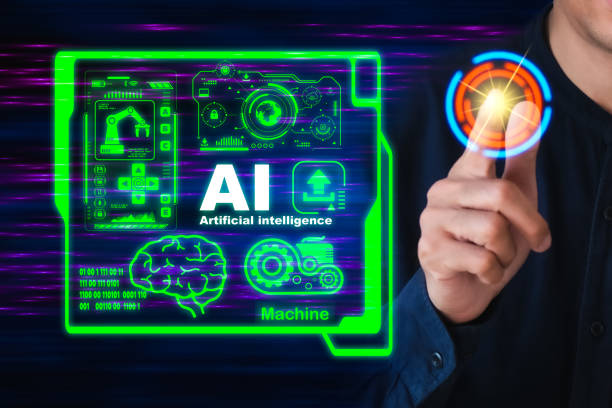
AI robots learn through machine learning algorithms.
Machine learning allows robots to learn from data and improve their performance without explicit programming.
AI robots
There are three main types of machine learning: supervised learning, unsupervised learning, and reinforcement learning.
In supervised learning, the robot is trained using labeled data.
Labeled data includes expected inputs and outputs.
By observing this data, the robot learns how to map inputs to expected outputs.
In unsupervised learning, the robot is trained using unlabeled data.
The robot must automatically discover patterns and structures in the data.
In reinforcement learning, the robot learns by interacting with its environment.
The robot performs actions and receives rewards or penalties for these actions.
By learning which actions lead to rewards and which lead to penalties, the robot learns how to optimize its behavior.
Machine learning algorithms enable robots to continually learn and adapt to new conditions.
AI robots
Still don’t have a company website and missing out on online opportunities? With professional corporate website design by RasaWeb,
✅ Double your business credibility
✅ Attract new customers
⚡ Free consultation for your corporate website!
Difference Between AI Robots and Traditional Robots
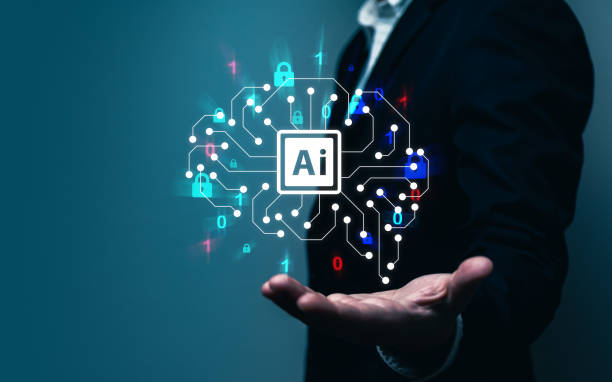
The main difference between AI robots and traditional robots lies in their level of intelligence and autonomy.
Traditional robots are usually programmed to perform specific and repetitive tasks.
They are not capable of learning or adapting to new conditions.
AI robot.
AI robots
In contrast, AI robots use artificial intelligence algorithms to learn, reason, and solve problems.
They can operate autonomously, interact with their environment, and make intelligent decisions.
AI robots can also adapt to new conditions and improve their performance.
Traditional robots are typically used in structured and predictable environments.
Whereas AI robots can also be used in unstructured and unpredictable environments.
For example, a traditional industrial robot might be used for welding car parts on a production line.
This robot can only perform the welding task and is not capable of performing other tasks.
In contrast, an AI robot can be used for neurosurgery.
This robot can independently design a surgical plan using medical images and sensor data and perform surgery with high precision and delicacy.
AI robots
How to Build an AI Robot: A Step-by-Step Guide
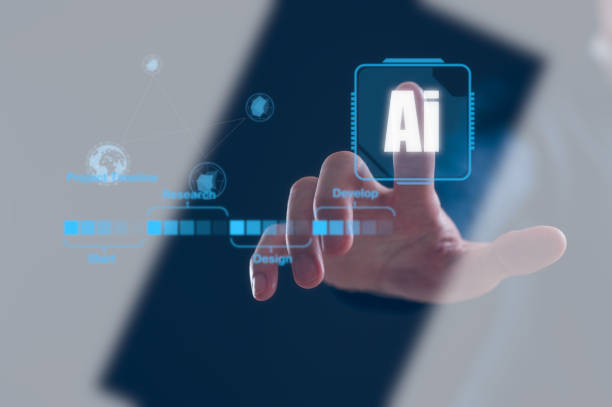
Building an AI robot is a complex and challenging project that requires knowledge and skills in various fields such as robotics, artificial intelligence, programming, and electronics.
However, by following a step-by-step approach, you can successfully complete this project.
AI robots
The first step is to define the robot’s objective.
Before starting to build the robot, you need to specify what the robot is supposed to do.
This objective will help you make the right decisions about the hardware, software, and AI algorithms needed for the robot.
The second step is to select the appropriate hardware.
The robot’s hardware includes mechanical parts, sensors, motors, controllers, and a power supply.
You must choose hardware that is compatible with the robot’s objective and provides the desired performance.
The third step is to develop the robot’s software.
The robot’s software includes programming code that controls the robot and implements artificial intelligence algorithms.
You must use an appropriate programming language to develop the robot’s software.
The fourth step is to train the robot.
For the robot to perform its tasks correctly, you must train it.
You can use machine learning algorithms to train the robot.
The fifth step is to test and evaluate the robot.
After building and training the robot, you must test it and evaluate its performance.
If the robot does not work correctly, you must troubleshoot and fix the problems.
AI robots
Frequently Asked Questions
| Question | Answer |
|---|---|
| What is an AI robot? | An AI Robot is a machine capable of understanding its environment, reasoning, learning, and making decisions to perform tasks autonomously. |
| What is the difference between regular robots and AI robots? | Regular robots perform repetitive tasks based on pre-programming, while AI robots can learn from experience, interact dynamically with their environment, and even behave in a way that resembles human intelligence. |
| What are the main applications of AI robots? | They are used in industries (manufacturing, assembly), medicine (surgery, diagnosis), services (customer support, domestic), exploration (space, underwater), and many other fields. |
| What technologies are used in the construction of AI robots? | Machine Learning, Computer Vision, Natural Language Processing, Deep Learning, and Robotics are among the key technologies. |
| Can AI robots have emotions? | Currently, robots do not have emotions in the human sense. They can identify and react to emotions, but they do not experience emotions themselves. |
| What are the main challenges in developing AI robots? | Safety, reliability, ethics, autonomy, adaptability to complex environments, and natural human interaction are among the important challenges. |
| How are AI robots trained? | They are typically trained using large amounts of data, machine learning algorithms, and deep learning to identify patterns and make decisions. |
| Examples of AI robots in daily life? | Smart robotic vacuum cleaners, customer support chatbots, self-driving cars, and surgical robots in hospitals. |
| Are AI robots a threat to human jobs? | Some repetitive jobs may be automated, but at the same time, robots can increase productivity and create new jobs in the development, maintenance, and supervision of these systems. |
| How is the future of AI robots predicted? | They are expected to become smarter, more autonomous, and capable of performing more complex tasks, interacting more closely with humans in various environments. |
And other services of RasaWeb Advertising Agency in the field of advertising
- Smart Link Building: Professional optimization for customer acquisition using attractive UI design.
- Smart Conversion Rate Optimization: A professional solution for customer acquisition focusing on precise audience targeting.
- Smart SEO: A creative platform for improving online growth with intelligent data analysis.
- Smart UI/UX: Professional optimization for increasing sales using marketing automation.
- Smart Website Development: A professional solution for improving SEO ranking focusing on custom programming.
And more than hundreds of other services in the field of internet advertising, advertising consultation, and organizational solutions
Internet Advertising | Advertising Strategy | Advertorials
References
The Future of Robotics and Artificial Intelligence in Iran
Applications of Artificial Intelligence in the Robotics Industry
How Smart Robots Are Changing Our World
Review of the Latest Achievements of Smart Robots
? To help your business reach its peak in the digital world and have a powerful and impactful presence, RasaWeb Advertising Agency, with expertise in key areas such as user-friendly website design, Search Engine Optimization (SEO), and targeted advertising campaigns, paves the way for your growth.
📍 Tehran, Mirdamad Street, next to Bank Markazi, Kazerun Jonubi Alley, Ramin Alley, No. 6

